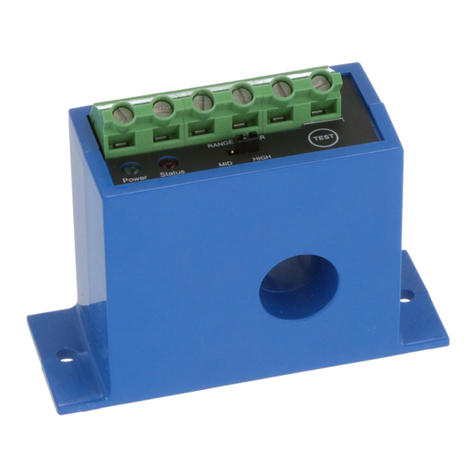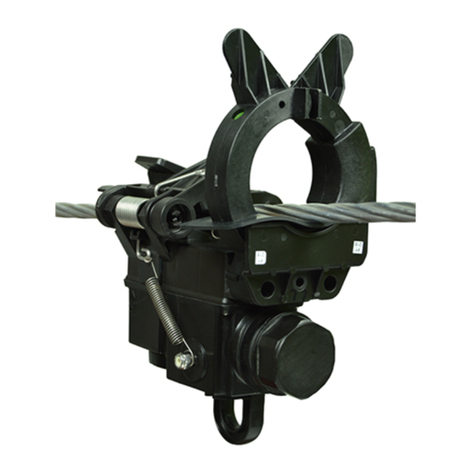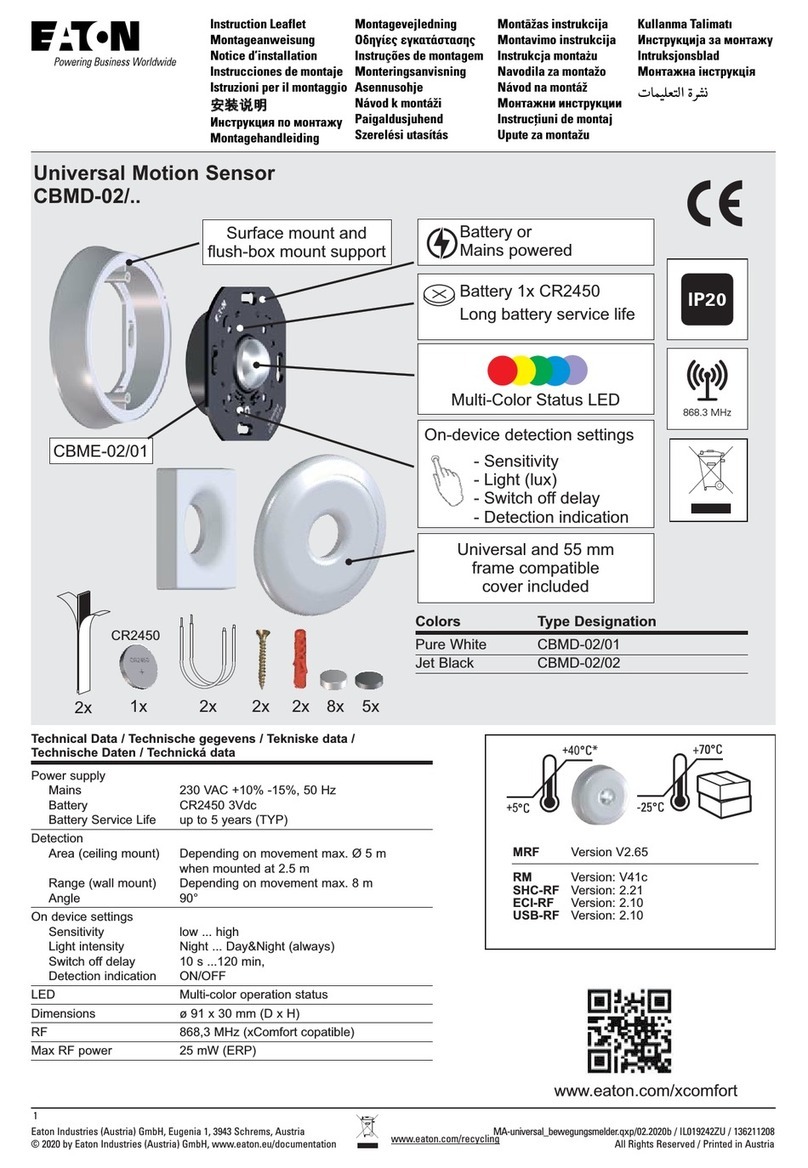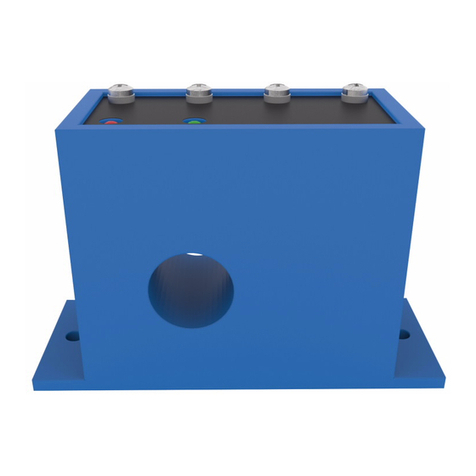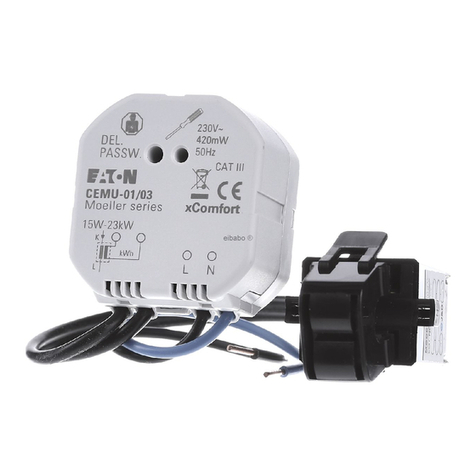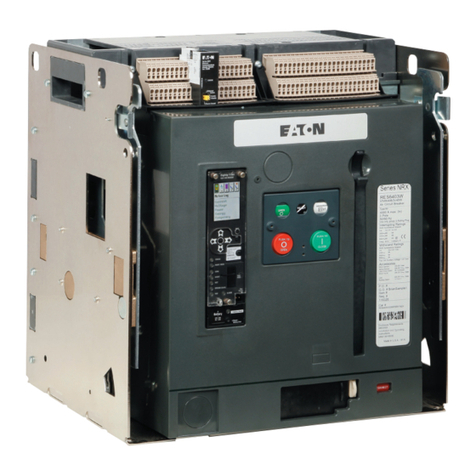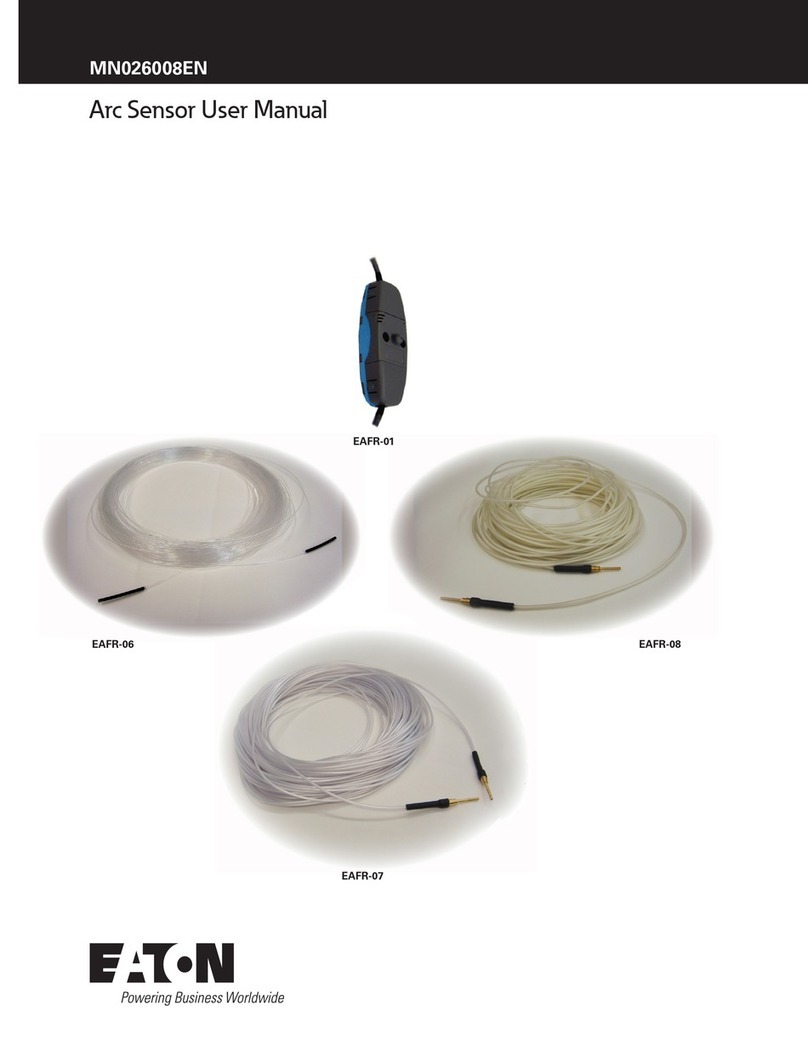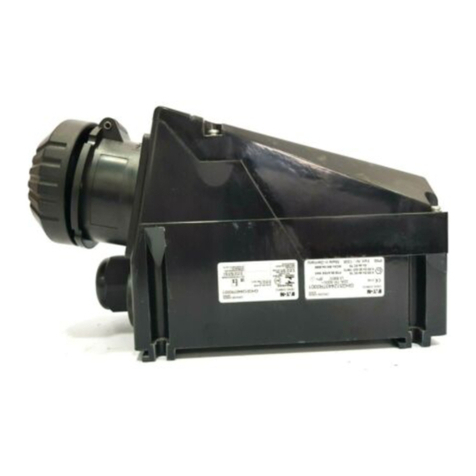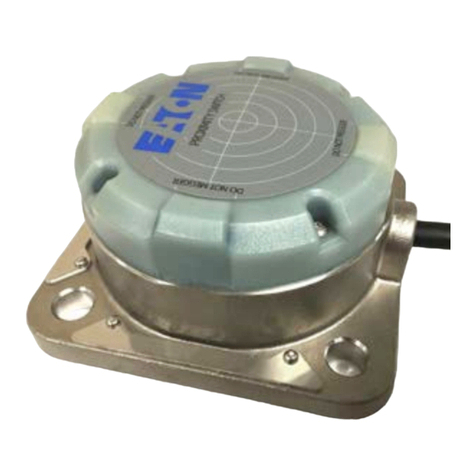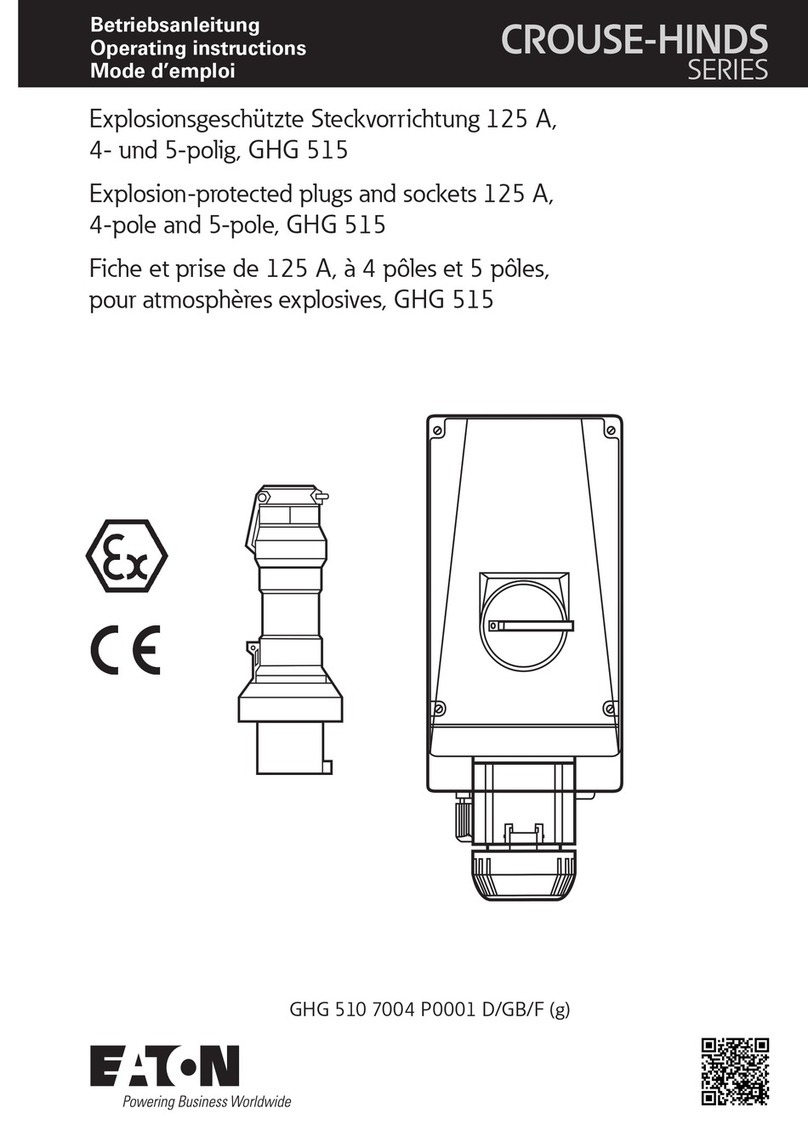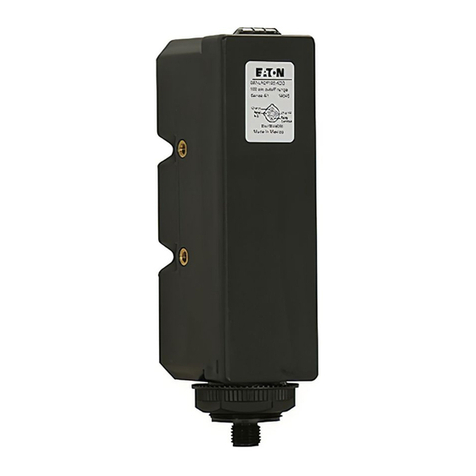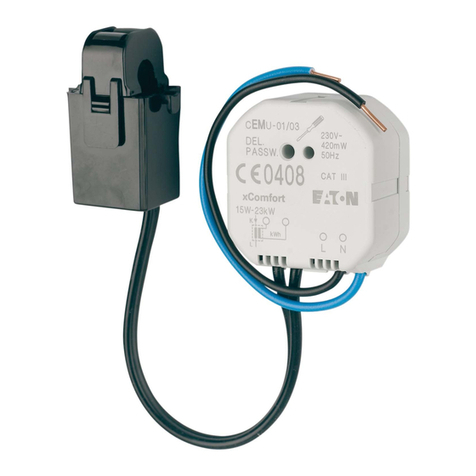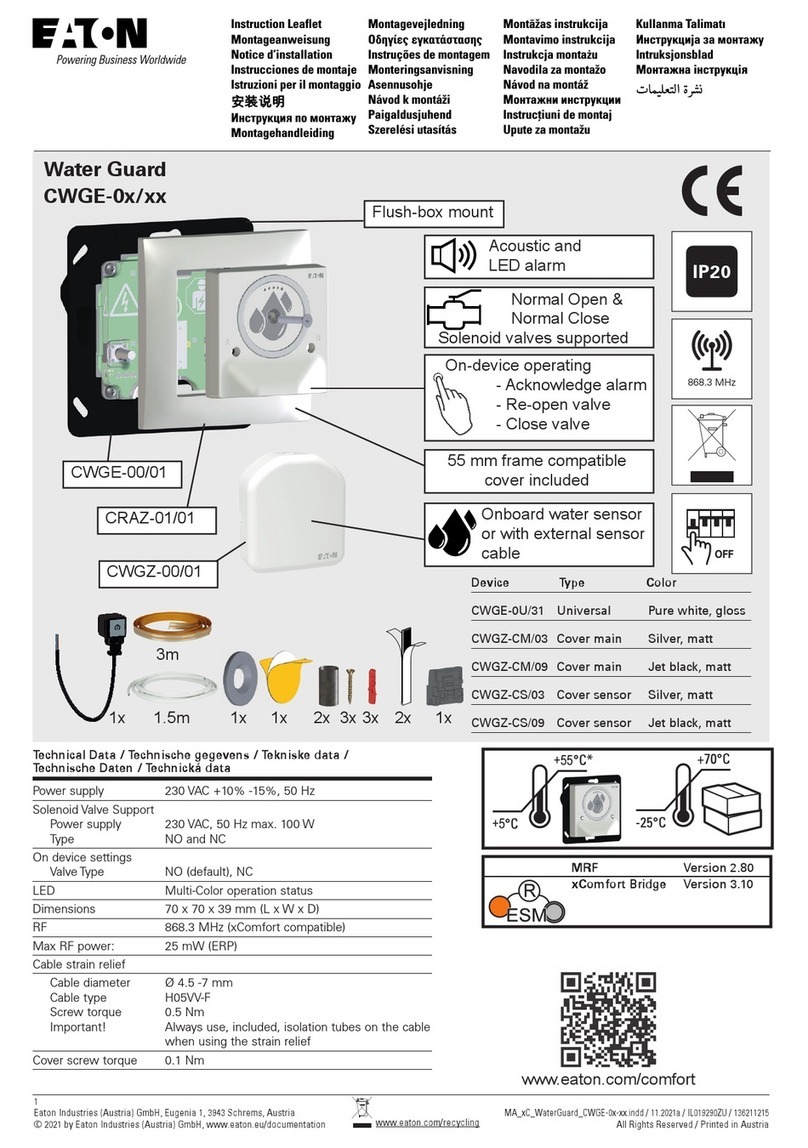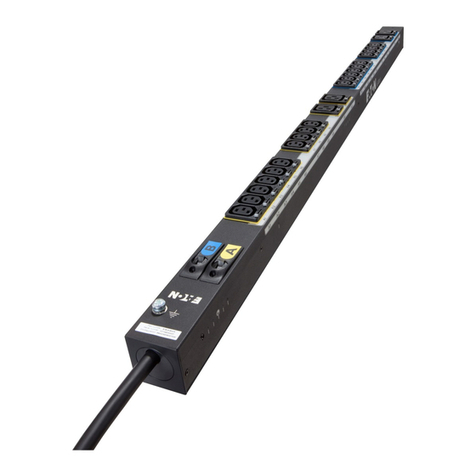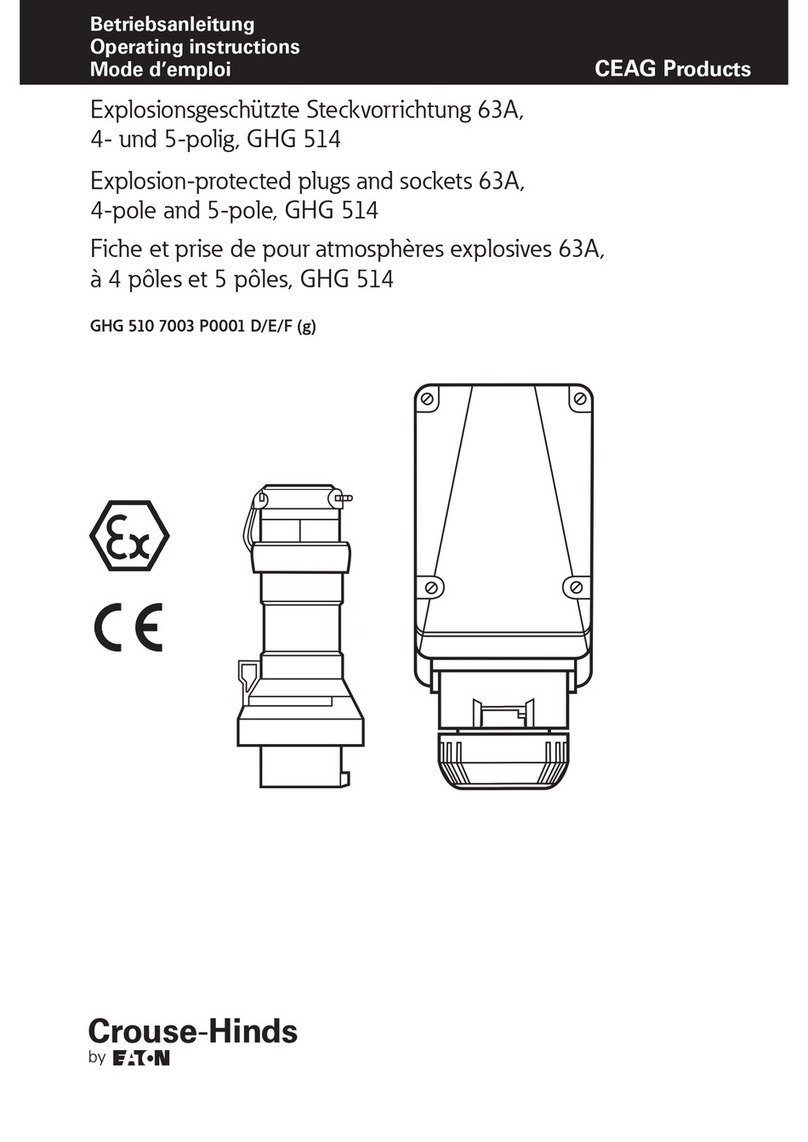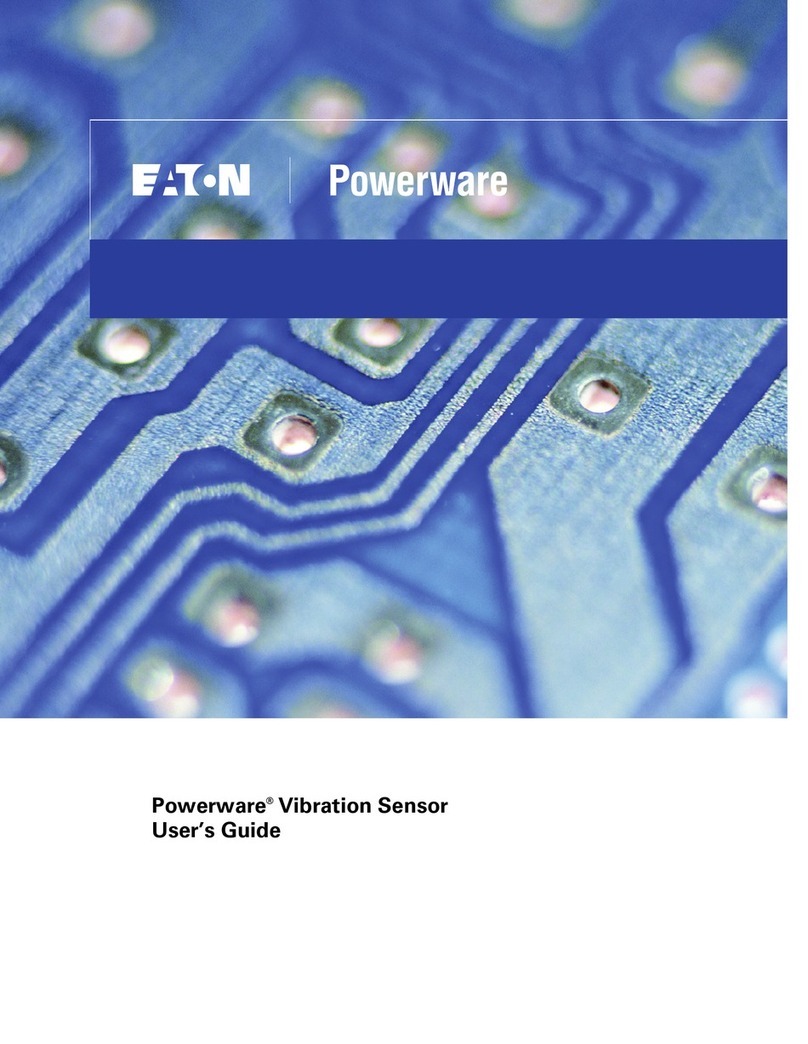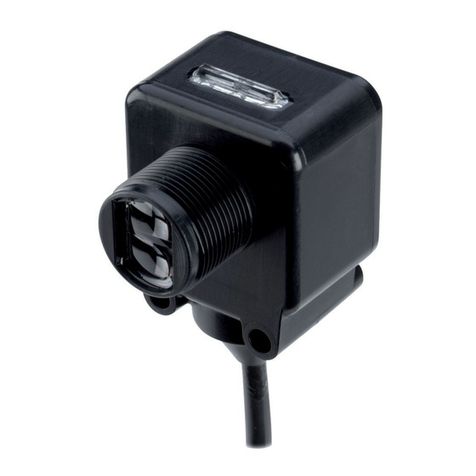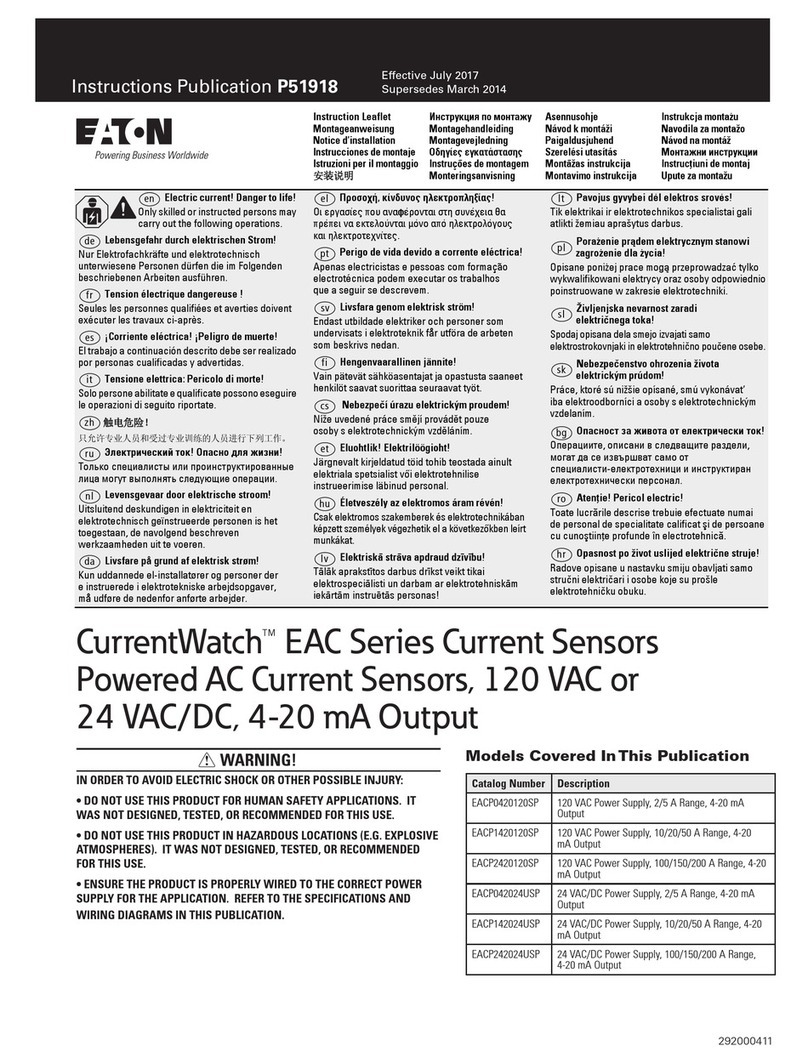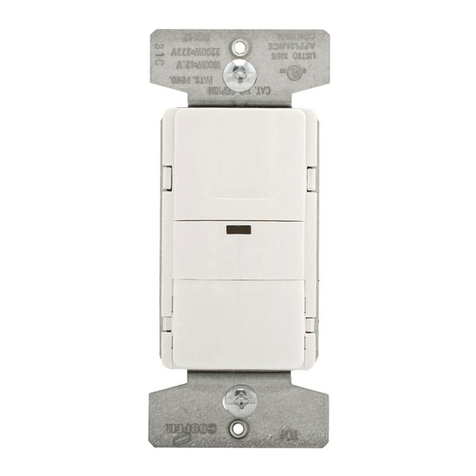
P50796 Rev 07 P50796 Rev 07
Effective: June 2010 Effective: June 2010Page 2 Page 3
MOUNTING
The Enhanced 50 Series sensor features a 30 mm threaded base housing
and includes jam nut and washer. This allows mounting into any 1.25 inch
hole. Use caution to avoid cross-threading the jam nut on the sensor body.
A second mounting method is to use #10 hardware in the mounting holes of
the sensor. This is ideal for mounting the Enhanced 50 Series Sensor against
a wall, piece of equipment, rail, or mounting bracket.
After mounting, ensure gain adjustment is turned fully clockwise (receiver
only). See Warning on Page 1 concerning pot adjustment.
MOUNTING AND SETUP FOR THRU-BEAM MODELS
Mount the emitter and receiver units so they are aimed directly at each
other from opposite sides of the target. (The receiver should be on the dirtier
side because the light scattering effect of dirt collecting on the lens is less
significant if it takes place at the receiver.) Ensure the area of the target to
be detected will block the entire effective beam (see illustration to the right).
Apply power to both units.
Accurate sensing depends on proper alignment of the emitter and receiver.
To begin, the emitter and receiver must be positioned in rough alignment
so that emitter light is received by the receiver (check by placing a solid
object in front of the emitter beam—the output indicator on the receiver will
change state when the object blocks the beam and will change back when
the object is removed). If the output indicator does not change state, follow
this alignment method:
Move the receiver back and forth in the horizontal axis to find the extreme
positions where the output indicator on the receiver goes “OFF” (in dark
operate mode) or “ON” (light operate mode). Position the receiver midway
between the two extremes. Repeat this procedure for the vertical axis, then
tighten the receiver in place. Now repeat the final alignment procedure for
the emitter.
The alignment (red) indicator LED on the top of the sensor can aid in setup.
Even if the sensor is working properly, it may not be optimally aligned. If
this is the case, this red LED will be off, indicating a low gain condition.
Repeating the alignment procedure to clear this indication will maximize the
long-term reliability of the unit.
In short range applications, you may need to reduce the sensor sensitivity
by turning the gain adjustment counter-clockwise to account for object
transparency in the detection zone.
LIGHT OR DARK OPERATE MODES (FOR ALL MODELS)
All sensors are equipped with a light/dark operate selector switch. In Light
Operate mode, the sensor output is energized when the sensor “sees” light.
For a thru-beam sensor in light operate mode, the output will be energized
when an object is not present in the detection zone (as the receiver is
“seeing” the light from the emitter). For a thru-beam sensor in dark
operate mode, the output will be energized when an object is present in the
detection zone. In dark operate mode, the sensor output is energized when
the receiver does not “see” light.
SENSORS WITH TIMING FUNCTIONS
Sensors are available with time delay functions as shown in the model
table on page one of this installation guide. Sensors with built-in timing
capability can be configured in
four different modes using the
Delay Range switch on top of
the sensor. These modes are:
NO DELAY
In this mode, the time delay
functionality is disabled and
the sensor operates in the
same way as would a standard unit. For “No Delay,” the Delay Range switch
must be selected to “T/D” and both delay potentiometers turned fully CCW.
ON DELAY
In this mode, after an object enters the detection zone the delay timer starts
and the sensor output does not switch until the timer has timed out. For “On
Delay,” the Delay Range switch must be selected to “T/B” and the Delay On
potentiometer turned CW to the desired delay time. See Note A for toggling
between short and long delays.
OFF DELAY
In this mode, when an object exits the detection zone, the delay timer starts
and the sensor output does not switch until the timer has timed out. For “Off
Delay,” the Delay Range switch must be selected to “T/D” and the Delay Off
potentiometer turned CW to the desired delay time. See Note A for toggling
between short and long delays.
ONE-SHOT DELAY
In this mode, a change in the state of the light beam will result in a delayed
output pulse. The switch labeled “D.O./L.O.” determines whether the pulse
is initiated by the “light to dark” transition of the light beam of the “dark to
light” transition. In the D.O. switch position, the pulse is initiated by the “light
to dark” transition, while in the L.O. position the pulse is initiated by the
“dark to light” transition.
The Delay On potentiometer adjusts the delay of the time between the
initiating transition and when the output pulse actually begins. The Delay
Off potentiometer adjusts the duration of the output pulse. See Note A for
toggling between short and long delays.
Note A: The positions of the Delay Range switches determine the length
of time delay. When put into the “S” position, the respective delay
potentiometer works over a short time delay range of 0-1.5 seconds
(approximate). When put into the “L” position, the respective delay
potentiometer works over a time delay range of 0-15 seconds (approximate).
OPTICAL PERFORMANCE
All optical specifications are guaranteed to be the minimum performance
under clean conditions of any product delivered from stock. Typical
performance may be higher.
Dirt in the environment will affect optical performance by reducing the
amount of light the control receives. For best results, sensors should be used
at distances where excess gain is higher than 1.5 (1.5 times the amount of
sensing power required to detect an object under ideal conditions). Higher
excess gain will allow the sensor to overcome higher levels of contamination
on the lens.
Source Beam Pattern
The beam pattern is the area
containing all the light rays emitted by
the source. The detector must be
placed within the source beam pattern.
Detector Field-of-View
The field-of-view is the area which
can be seen by the detector. The
source unit must be placed within the
detector’s field-of-view for the
detection system to operate.
Effective Beam Diameter
For a thru-beam system, the effective beam is a “rod”
defined by the edge rays traced from the source lens to the
detector lens. The only source-generated light rays that the
detector sees are those that travel in a straight line from
the source lens to the detector lens. Note that the object
must fully block the beam in order to be detected.
Thru-Beam
1. 1151E/1251E
2. 1150E/1250E
10
1
1
0.3
10 1000
RANGE (feet)
RANGE (m)
EXCESS GAIN
100
1000
30.5 5030.3
100
1
2
SPECIFICATIONS
AC/DC
Electromechanical Relay Models
AC/DC
Solid-State Relay Models
DC Only
Models
Input Voltage 12 - 240V DC
24 - 240V AC
12 - 240V DC
24 - 240V AC
10 - 40V DC
Light/Dark Operation Switch selectable
Operating Temperature -13 to 122ºF (-25 to 50ºC)
Humidity 95% Relative Humidity; Non-Condensing
Case Material Fiberglass Reinforced Plastic
Lens Material Acrylic
Vibration IEC 60947-5-2 Part 7.4.2
Shock IEC 60947-5-2 Part 7.4.1
Protection Output Short Circuit, Overcurrent Protection and Reverse Polarity Protection
Enclosure Rating IP67
Output Load 3A @ 120V AC
3A @ 240V AC
3A @ 28V AC
300 mA @ 240V AC/DC 250 mA @ 40V DC
Response Time 15 mS 2 mS
Timer Timing Response 0 - 15 sec.
No Load Current <30 mA
Leakage Current (Maximum) — 1 mA @ 240V AC <10 µA
Emitter LED Infrared 880 nm
Indicator LEDs Yellow for Power; Green for Output; Red for Alignment
DIMENSIONS IN INCHES (MM)
Cable and Pigtail Connector* Versions AC/DC Micro or Euro (Micro)
Connector Versions
Mini Connector Versions
2.87
(73)
1.81
(46)
0.59
(15)
1.42
(36)
1.91
(48.5)
0.26 (6.5)
Dia.
0.21 (5.2) x0.32 (8.1)
Slot – 2 Places
0.31
(8)
0.16
(4)
2.87
(73)
1.81
(46)
0.59 (15)
0.55
(13.97)
1.42
(36)
1.91
(48.5)
0.21 (5.2) x0.32 (8.1)
Slot – 2 Places
0.31
(8)
0.16
(4)
2.87
(73)
1.81
(46)
0.59 (15)
0.70
(17.78)
1.42
(36)
1.91
(48.5)
0.21 (5.2) x0.32 (8.1)
Slot – 2 Places
0.31
(8)
0.16
(4)
* Pigtail length: 7.5” nominal
Red LED:
Alignment
Yellow LED:
Power
Green LED:
Output
Dark/Light
Operate Adjustment
Delay Range
Selection
Delay On
Potentiometer
Delay Off
Potentiometer
Sensitivity
Potentiometer
T/D L L
ON OFF
ONE
SHOT
SS
MAXMIN
D.O. L.O.
EXCESS GAIN CURVE
